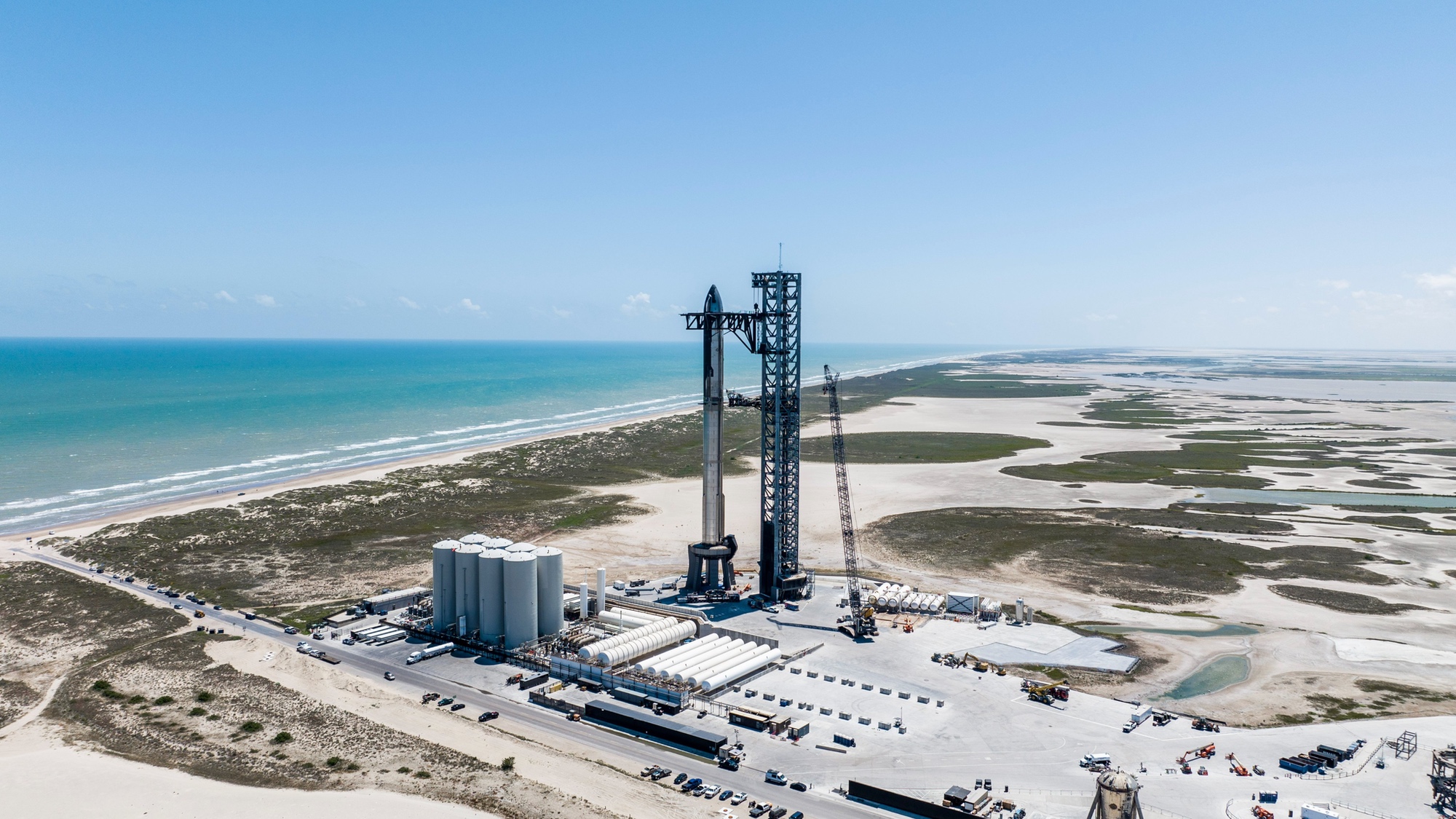WASHINGTON — The Federal Aviation Administration has completed the mishap investigation in SpaceX’s first integrated Starship launch in April but is not ready yet to approve a second launch of the vehicle.
In a Sept. 8 statement, the FAA said it completed the investigation into the April 20 launch of the Starship vehicle and its Super Heavy booster from the company’s Starbase test site in Boca Chica, Texas. The vehicle suffered several failures of Raptor engines in the booster during its ascent, later tumbling before being destroyed by a flight termination system four minutes after liftoff.
The FAA said the report itself will not be released because it contains proprietary and export-controlled information. The agency said the report found “multiple root causes” for the mishap but did not identify any of them.
SpaceX, in a separate statement, said that leaking propellant in the aft end of the Super Heavy booster created fires that severed connections with the primary flight computer. “This led to a loss of communications to the majority of booster engines and, ultimately, control of the vehicle,” the company said.
The FAA, which oversaw the SpaceX-led investigation, noted the investigation identified 63 corrective actions SpaceX must complete before another launch.
“Corrective actions include redesigns of vehicle hardware to prevent leaks and fires, redesign of the launch pad to increase its robustness, incorporation of additional reviews in the design process, additional analysis and testing of safety critical systems and components including the Autonomous Flight Safety System, and the application of additional change control practices,” the FAA stated.
SpaceX said it has added “leak mitigations” to the booster and improved testing, along with a “significantly expanded” fire suppression system in the booster’s engine bay. The company said it also improved the reliability of the autonomous flight termination system, which took longer to operate than expected on the April launch.
The completion of the investigation does not mean the FAA has approved plans for another launch. “SpaceX must implement all corrective actions that impact public safety and apply for and receive a license modification from the FAA that addresses all safety, environmental and other applicable regulatory requirements prior to the next Starship launch.”
The FAA, in its letter to SpaceX informing the company that the mishap investigation was now closed, noted that the original Starship launch license covered only a single flight. SpaceX must apply for a license modification for additional launches, and as part of that process demonstrate it has implemented the corrective actions.
It’s unclear exactly how much progress SpaceX has made on those corrective actions. In addition to the measures mentioned in its statement, the company has taken steps to mitigate damage to the pad, adding a water deluge system to prevent the thrust from the engines in the Super Heavy booster from damaging the concrete pad, as happened on the April launch.
SpaceX Chief Executive Elon Musk said in June that the company made “well over a thousand” changes to the vehicle. That appeared to include changes beyond what was needed to respond to the mishap, such as switching to an approach called “hot staging” where the Starship upper stage will ignite its engines before separating from the Super Heavy booster, a move intended to boost payload performance.
SpaceX said in the statement it made “a full suite of system performance upgrades unrelated to any issues observed during the first flight test,” such as the move to a hot-staging architecture. Other changes include an electronic thrust vector control system for the Raptor engines in Super Heavy that is more reliable and energy efficient than the original hydraulic system.
SpaceX has been moving ahead with preparations for second integrated Starship/Super Heavy flight. It rolled out a Starship vehicle designated Ship 25 to the pad Sept. 5 and installed it on top of Booster 9, which had completed a static-fire test Aug. 25.
“Starship is ready to launch, awaiting FAA license approval,” posted Musk. Neither SpaceX nor the FAA estimated how long it would take to get a license approved.
